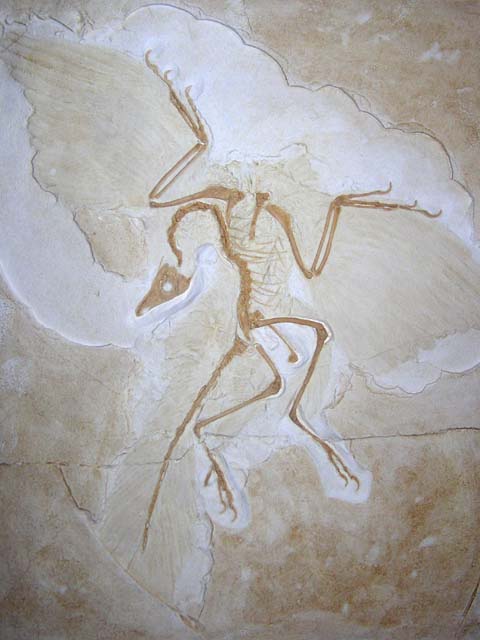
We've moved! Visit us at www.scienceinseconds.com
On seeing the Archaeopteryx fossil, your first thought might have been: "Wow! What an amazing missing link between dinosaurs and birds!"
But second thought was probably: "What's up with it's neck?"
Dinosaur fossils are often positioned in ways that seem at least highly uncomfortable, if not impossibly flexible. Could these dinosaurs really bend their heads back like that? And was there some reason in the last moments of life that they decided to utilize this strange skill?
Several possible theories exist.
The first, and most intuitive for me, is that after dying in a more natural pose the dinosaur was exposed to sunlight for an extended period of time. This caused the flexible ligaments lining the back of the dinosaur's neck to dry out and contract, slowly pulling the head backwards.
But a more recent explanation, thanks to the work of a veterinarian-turned-geologist, has been gaining popularity. Dr. Cynthia Faux (PhD, PhD. Suck on that, single doctorates) is suggesting that the death pose is the result of brain injury during death, not post-mortem sunbathing. Because after years of observing the deaths of parrots (insert Monty Python joke here), Dr. Faux can recognize a cerebellum disorder called opisthotonos, which causes birds and other animals to adopt the same strange conformation at death.
Either way, seeing the contorted spines and flailing necks of these long dead lizards really puts my measly neck problems in perspective. Thanks, Archaeopteryx!
- Brit Trogen





I think I know Cynthia's father: Faux Pa
ReplyDeleteCan you really trust a "double doctorate" with a last name that translates to "false"? My unfounded prejudice says no.
ReplyDeleteFaux is the name Cynthia took when she married, well after achieving her double doctorates. I do know her father and he's more of a B.S. kind of guy, and I'm not talking Bachelor of Science either.
ReplyDeleteBack to science. I saw the same physical reaction when my cat died.